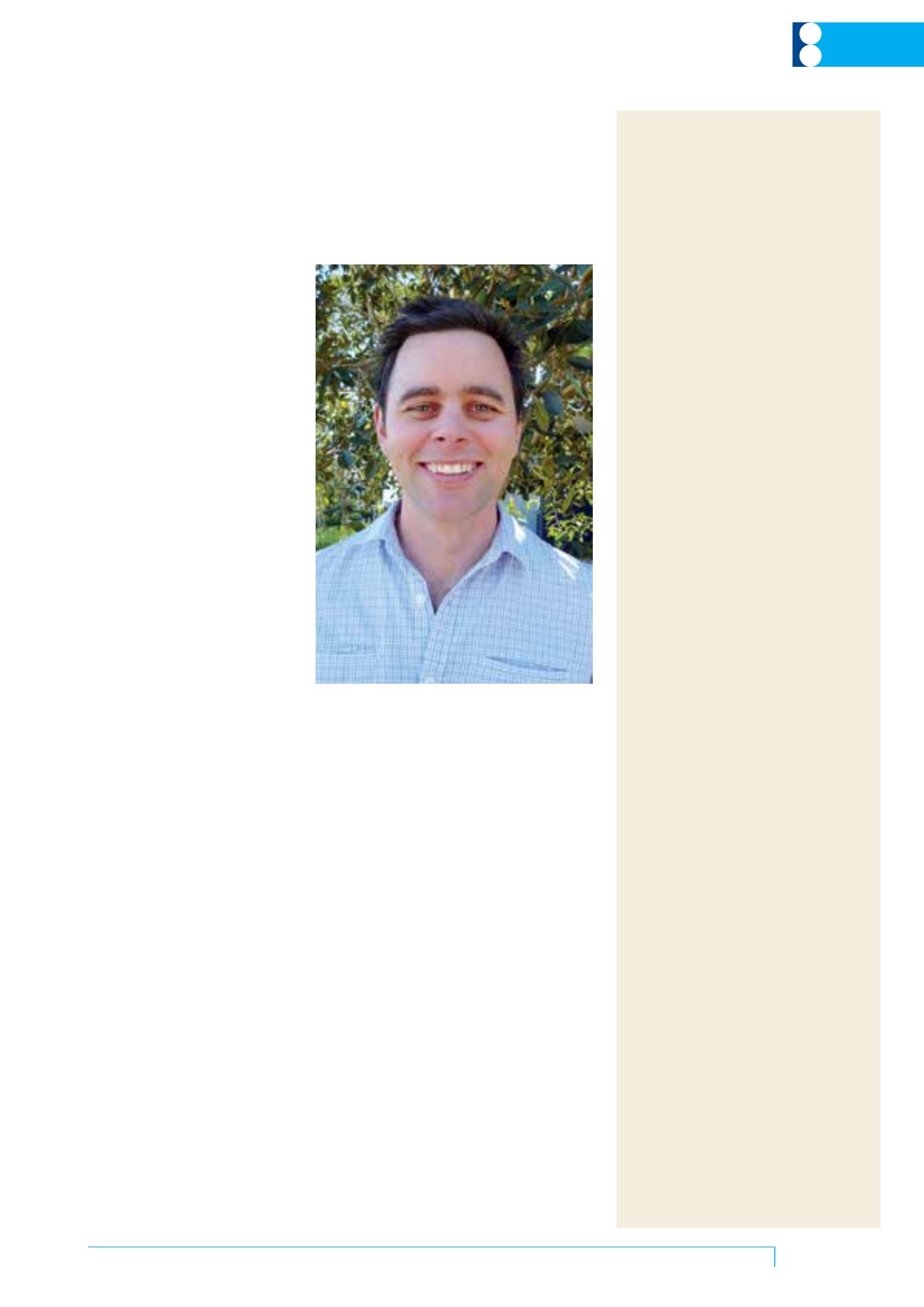
 www.speechpathologyaustralia.org.au
www.speechpathologyaustralia.org.au
JCPSLP
Volume 18, Number 2 2016
49
National Disability Insurance Scheme
T
he advent of the National
Disability Insurance Scheme
(NDIS) represents a
fundamental shift in the way in which
services for individuals with lifelong
disability are funded, accessed,
and provided. In principle, the NDIS
will see control of allocated funds
shift from organisations to individual
participants within the scheme,
allowing them to choose from the
range of services available in their
location. For speech-language
pathologists and other allied health
practitioners, these changes present
tremendous opportunites, but also
challenges, which together are the
focus of this issue.
Hines and Lincoln open the issue
with a timely reflection on how the
NDIS funding model might impact
on the training, recruitment, and
retention of SLPs in the disability
sector. They challenge colleagues in both university and workplace settings to develop
innovative clinical placement and continuing professional development models to ensure
a sufficiently large and capable workforce. Simpson and Douglas review research
examing the impact of self-directed funding models, similar to that being applied in the
NDIS. They note that reported benefits (e.g., greater flexiblity and autonomy) are off-set
partially by assoicated challenges (e.g., administrative burden on families) and call for
higher quality research examining the impact on indiviudals and families. Johnson and
West present strategies for addressing key challenges to individuals with complex
communication needs participating in the NDIS planning process.
Two articles address the issue of information access and accuracy, including
associated impacts on practice. In the first, Anderson and Andres evaluate the
relevance, scope, and credibility of online information about augmentative and alternative
communication. Westerveld leads an article examining common misconceptions
regarding reading development in children with autism spectrum disorder, arguing for
alternative interpretations. Finally, Olsson and Johnson round out the set of articles
relating to the NDIS theme by elucidating emerging ethical issues for SLPs working with
participants in the scheme. A further three articles – examining phonological awareness
of skills of higher education students, communication partner training for nurses, and
prognostic and predictive factors in stuttering – along with regular columns complete the
issue.
When I commenced work in early intervention services for children with disability
15 years ago, I never dreamt I would see the roll out of a national scheme, supported
by all mainstream political parties, with the expressed purpose of giving power to
individuals with disability and their families, within such a short amount of time. Again,
the opportunities are tremendous, and as presented in the articles herein, we as a
profession must be agile, creative, and inspiring in the way we embrace and shape the
new way of working as experts in the field.
From the editor
David Trembath
49
From the editor
50
Boosting the recruitment and
retention of new graduate
speech-language pathologists for
the disability workforce
–
Monique
Hines and Michelle Lincoln
55
An examination of the impact of
self-directed funding models on
children with disabilities
–
Andrea
Simpson and Jacinta Douglas
62
Meeting the planning needs of
people with complex
communication needs
–
Hilary
Johnson and Denise West
67
Googling AAC: Exploring the
relevance, scope, and credibility of
online information about
augmentative and alternative
communication
–
Kate L. Anderson
and Paul Andres
75
Ethics and the National Disability
Insurance Scheme
–
Cathy Olsson
and Trish Johnson
80
Reading instruction for children
with ASD:
Getting the story straight
–
Marleen F. Westerveld, Jessica
Paynter, and David Trembath
84
The phonological awareness skills
of education and speech
pathology higher education
students during their first semester
of study
–
Marleen F. Westerveld and
Georgina Barton
89
Communication partner training
for nurses:
A pilot study of an online
learning program –
Kathryn McKinley
and Robyn O’Halloran
94
Stuttering prognosis and
predictive factors of treatment
outcome:
A review
–
Charn Nang
and Natalie Ciccone
100
Webwords 54:
Caroline Bowen
102
Top 10
–
Janice Buckland
104
Around the journals
Contents


















